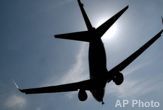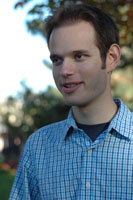When Flying, the '2 Seat Rule' Might Keep You Healthy

A new study of influenza and air travel shows that passengers seated in the two rows either in front of or behind someone with the flu are at greatly increased risk of getting the flu themselves — almost half as likely to become infected as the people who are seated next to the sick passenger.
Australian researchers found a "splash zone" of sorts — within two seats, in any direction, of an infected passenger — while studying flu infections that spread aboard two large airliners that entered the country during the swine flu pandemic in May 2009.
There was an increased risk of 3.6 percent for passengers sitting within two rows of someone with flu-like symptoms, the researchers said. That jumped to 7.7 percent for those within two seats on either side of the infected passenger.
"The closer you are to an infectious person, the higher your chances of becoming infected yourself," said study researcher Paul Kelly, an epidemiologist at Australian National University in Canberra. "This is especially the case on long-haul flights," those lasting more than four hours.
Researchers hope the results will help officials make better decisions when it comes to screening travelers to avoid the spread of not only influenza but other infectious diseases.
Governments should "screen and stop symptomatic patients from flying," Kelly said.
For travelers who are worried about an infected seat neighbor, Kelly had the following advice: "Change seats!"
Sign up for the Live Science daily newsletter now
Get the world’s most fascinating discoveries delivered straight to your inbox.
He added: "If you have a mask, wear it or suggest your neighbor wears it. Wash your hands, and avoid touching your own face to minimize the chances of spread via that route." [Read: Intimate Pat-Downs Raise Infection Risk at Airports]
The two flights studied had a total of 738 passengers, and 319 of them responded to the surveys. The researchers also used databases with reports of the H1N1 flu virus to find additional cases. However, they acknowledged there may have been more flu cases they did not obtain information on.
At least eight passengers on one flight, which left from Los Angeles, had flu-like symptoms at takeoff. Shortly after landing in Sydney, 2 percent of tested passengers on the plane had confirmed cases of H1N1, and there may have been more unreported cases.
The other flight, which arrived in Sydney from Singapore, was not suspected of posing a problem because Singapore had not yet reported any cases of H1N1. One passenger had flu-like symptoms before takeoff, and two others developed them in-flight. Only one of those three passengers was tested later, and that person did not have H1N1. Shortly after the plane landed, however, a child on the flight was found to have contracted H1N1.
The researchers said a major obstacle to warding off epidemics comes with delays in flu symptoms. Five of the nine infected passengers did not show signs of flu when boarding the plane.
"It's these people who are asymptomatic who may be the most troublesome, because they're harder to find," said Brian Coburn, a research scientist who does mathematical modeling at UCLA. "They're going through life without awareness that they're infected yet."
Coburn, who was not involved in the study, and the Australian investigators emphasized the importance of screening, particularly of passengers seated around a person known to be infected. That might include the need to contact them after the flight once an infection is discovered.
"It's that one person that actually gets away that could actually cause a major outbreak in an area," Coburn said.
Coburn said the results of the study are in line with previous projections of how influenza spreads on an airplane. (Coburn and colleagues made one such projection during the swine flu pandemic.) So there now seems to be a way to try to determine the spread of other infectious diseases, such as avian flu and tuberculosis, if they emerge.
"If you have the data on a virus ... for airborne diseases, I think this is an excellent framework for people to follow with other diseases," he said.
This story was provided by MyHealthNewsDaily, a sister site to LiveScience. Follow MyHealthNewsDaily on Twitter @MyHealth_MHND.










